Perspectives of STEM Students with Disabilities: Our Journeys, Communities, & Big Ideas
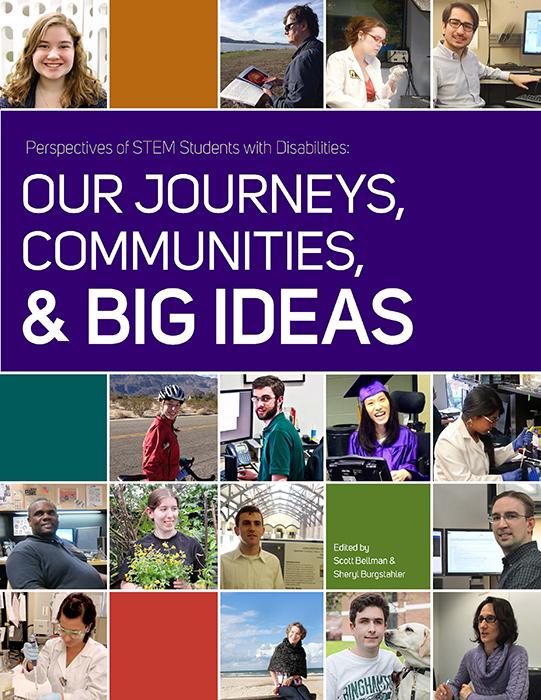
This book features the biographies of students with disabilities pursuing STEM education and careers. The student essays in this book are organized into three main themes: student journeys and pathways into STEM, the importance of a supportive community, and student reflections about how STEM fields can change the world. Through their stories, we hope that you enjoy getting to know these students as much as we have and are motivated to begin or further your efforts to promote the full inclusion of individuals with disabilities in STEM careers.
Forward
“Young scientists and engineers teach us something beyond the specific topics that they’re exploring. They teach us how to question assumptions; to wonder why something is the way it is, and how we can make it better. And they remind us that there’s always something more to learn, and to try, and to discover, and to imagine – and that it’s never too early, or too late to create or discover something new…We don’t want to just increase the number of American students in STEM. We want to make sure everybody is involved. We want to increase the diversity of STEM programs, as well…We get the most out of all our nation’s talent – and that means reaching out to boys and girls, men and women of all races and all backgrounds. Science is for all of us. And we want out classrooms and labs and workplaces and media to reflect that.”
PRESIDENT BARACK OBAMA, 3.23.15
Remarks at the White House Science Fair
Preface
The United States workforce is struggling with a shortage of highly skilled professionals in science, technology, engineering, and mathematics (STEM) fields. This is due in part to the underrepresentation of specific populations in STEM, including women, racial/ethnic minorities, and individuals with disabilities.
Research reveals that people with disabilities experience a lower level of career success than those without disabilities. They are less likely to attend college, pursue STEM majors, and earn degrees. People with disabilities who are also racial/ethnic minorities and/or females face additional challenges in their pursuit of STEM careers. However, the success stories of the relatively low numbers of individuals with disabilities in STEM demonstrate that opportunities do exist for those prepared to meet the challenges that they encounter. They acquire academic, technical, and self-determination skills and find ways to overcome barriers, such as inadequate access to role models , technology, and encouragement from instructors and support staff. Successful people with disabilities can pave the way for students with disabilities who are ready to take on challenges in pursuit of STEM majors and careers, and they can demonstrate to educators, employers, and other stakeholders the unique contributions that talented students and employees bring to STEM fields.
The purpose of this book is to
- highlight the accomplishments of STEM students and professionals with disabilities;
- share strategies and best practices for fully including students who have disabilities in STEM academic programs and careers; and
- increase the successful participation of people with disabilities in STEM and improve these fields with their unique perspectives and expertise.
The student essays in this book are organized into three main themes: student journeys and pathways into STEM, the importance of a supportive community, and student reflections about how STEM fields can change the world. Through their stories, we hope that you enjoy getting to know these students as much as we have and are motivated to begin or further your efforts to promote the full inclusion of individuals with disabilities in STEM careers.
Journeys in STEM
Transitioning through academic levels to a career is a journey. The AccessSTEM and AccessComputing projects, both led by the University of Washington (UW) and funded by the National Science Foundation (NSF), help students with disabilities toward careers in science, technology, engineering, and mathematics (STEM), with AccessComputing more narrowly focused on computing fields. DO-IT—which stands for Disabilities, Opportunities, Internetworking, and Technology— partners with the UW College of Engineering and Department of Computer Science and Engineering to undertake these projects that promote the success of individuals with disabilities in college, graduate school, and careers.
In AccessSTEM and AccessComputing hundreds of individuals with disabilities have participated in activities that increase STEM interest and success through critical junctures (e.g., high school graduation, enrollment in college) and transitions (e.g., military service to college, 2-year to 4-year school, undergraduate to graduate school, college to career). Participants engage in activities that include STEM internships, mentoring, self advocacy practice, peer support, role-play interactions with faculty and employers, and career opportunities.
The AccessSTEM critical junctures model (see Figure below) identifies key steps that lead to the success of students with disabilities in STEM careers. Based on a literature review and over twenty years of practice in the field, the model also highlights interventions (e.g., mentoring, research experiences, technology access) that support students on their journeys.
The AccessSTEM/AccessComputing/DO-IT Longitudinal Transition Study (ALTS) measures success in taking critical steps toward STEM careers of participants with disabilities in activities sponsored by AccessSTEM and other projects sponsored or co-sponsored by the DO-IT Center at the UW. To date, more than 300 students with a wide range of disabilities participate in this ongoing study.
In ALTS, participants are asked to report key academic and work-based achievements. They also identify the DO-IT activities they participated in and rate the value of specific activities. Researchers record the “on track” status of respondents as they progress through critical junctures that lead to degrees and careers in STEM. As this database grows, it increasingly reveals the long-term impact of DO-IT’s program activities. It quantifies the relative importance of activities for achieving positive postsecondary outcomes. More information about ALTS and its current results are available at www.uw.edu/doit/2011-report-accessstemaccesscomputingdo-it-longitudinal-transition-study-alts.
Ultimately, understanding the STEM journeys of students with disabilities requires that we hear their stories, understand their struggles, and reflect on their experiences. The following section of this book shares essays about journeys in STEM from participants in AccessSTEM, AccessComputing, and other DO-IT programs.
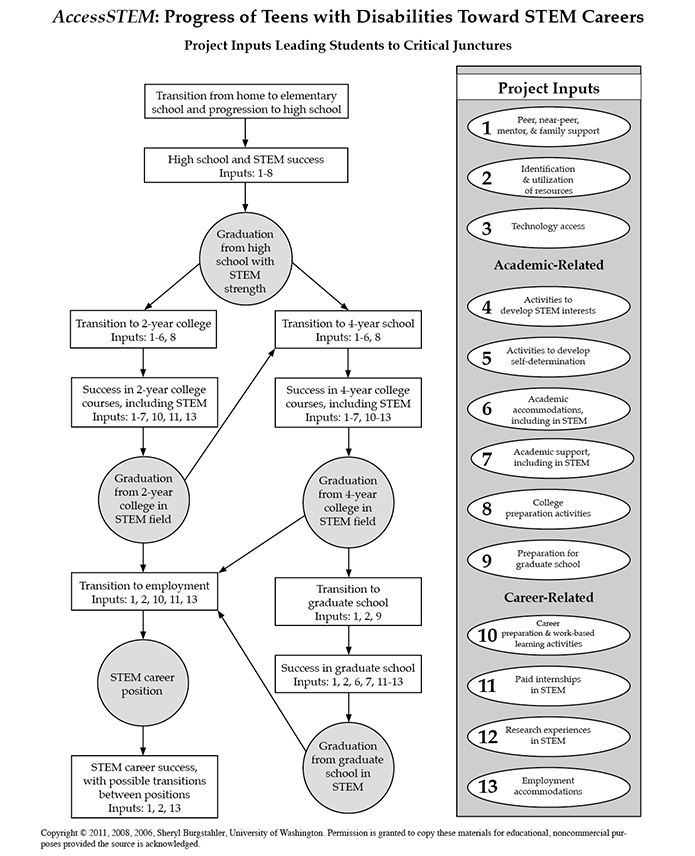
Vincent
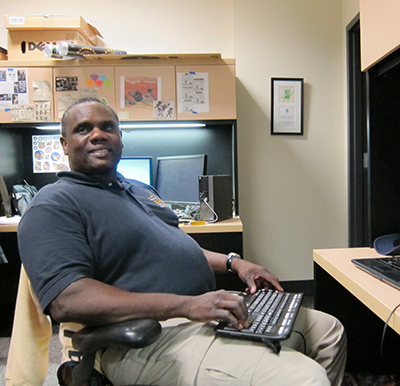
My mother told me that the encyclopedias that still sit on the shelves in their house in my hometown were purchased because of my constant questions about how everything worked.
Even playing sports, I always took the analytical route towards getting something accomplished, instead of just trying to play for fun. I’m sure that’s what started my journey into a STEM-related major and career. I truly believe this is how I came to study several different STEM fields, as none of them led me to answers. Rather, more intriguing and complex questions have unfolded along the way.
I am currently a PhD student in human centered computing, which is best defined as the intersection between humans and computers. I got to this point in my education and career by way of two different engineering undergraduate degrees, a third undergraduate degree in psychology with an emphasis in engineering psychology, and a master’s degree in human computer interaction. My various degrees are all relevant in the research being done with mobile and ubiquitous computing. I’ve also learned, unexpectedly, that my STEM education has been more useful in my day-to-day life than it has in my work career.
I diagnosed my own eye disease as a result of diligence on my part and not accepting the answer of, “there is nothing wrong with your eyes that we can see.” Most importantly, after a diagnosis of retinitis pigmentosa was confirmed, I used my technical background to start creating modifications that would make me an efficient and productive worker. My engineering background, which relied heavily on mathematics, science, and reasoning power, led me to design my own assistive technology devices and better understand those that already existed. Because of these interests, I ventured into rehabilitation engineering. After many years of work and being recruited to work as a rehabilitation research engineer at a lab, I realized that I wanted to do research for the rest of my life.
In order to achieve that goal, I had to return to school to garner the degrees and knowledge to become a principal investigator. I added a degree in psychology to enhance my understanding of human behavior and realized that the majority of my work had been in dealing directly with computers and humans. That is how my final phase of education came to focus on human computer Interaction and will culminate with a PhD in human centered computing. The next step in my STEM journey is completing my PhD and diving into the research with unbridled enthusiasm.
Katie
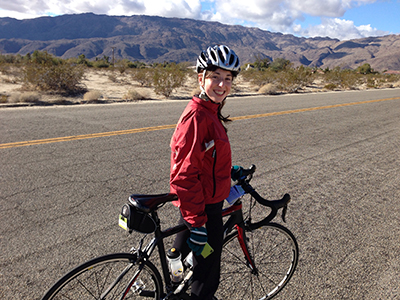
Engineering
My journey into STEM can be traced back to a quick web search in high school. I loved math and was on the hunt for a college major that would allow me to study math for as long as I could. That’s how I first learned about engineering.
I selected Olin College of Engineering for its small size and innovative hands-on engineering program, and I decided to concentrate in computing based on my experience with Java programming. As a deaf student, Olin was perfect for me—its small and intimate classes made it easy for me to lip read, and I never felt uncomfortable asking professors or classmates to repeat themselves.
At Olin, I learned how to design products and services that meet real user needs. I put those skills to use during my internship at the University of Washington (UW), where I worked on a project called “ClassInFocus.” ClassInFocus brings all of the information that might be presented in a mainstream classroom (captions, videos, slides, and notes) onto one screen, making it more accessible to deaf students. I loved my first real taste of how rewarding it was to work on assistive technology!
During that same summer, I had the opportunity to visit companies like Microsoft, Google, and Adobe with students in an AccessComputing program called the Summer Academy for Advancing Deaf and Hard of Hearing in Computing. We learned what it was like to work in the tech industry, and we met several Deaf professionals in the field.
In my senior year at Olin, I applied for a program manager position at Microsoft. It felt like a perfect fit for the design and management skills I had acquired. I got the position, and I’m currently on the Microsoft Word team. It’s still hard for me to believe I’m designing features for such a popular product. It’s hard to say where my STEM journey will take me next.
Microsoft has excellent accommodations for deaf employees. Interpreters and captioning are available for all meetings and events. While I still face challenges, I have great co-workers who understand my needs. They’re happy to repeat things when I ask and even remind each other to face me while they’re talking.
Since starting at Microsoft, I’ve returned to visit the Summer Academy at the UW, and I have spoken on various panels about my experiences. The advice I give is to always advocate for yourself, to be persistent, and to use the resources available to you, whether it’s reaching out to people or requesting accommodations. It’s fun and rewarding to share my experiences with others and hear their stories and advice as well.
Joseph
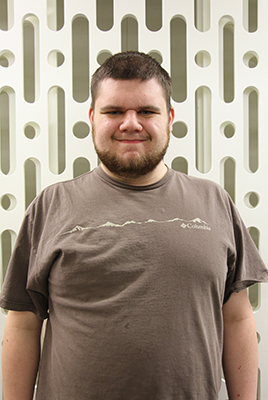
Engineering Technology
I’ve always loved tinkering around with technology. My high school had a friendly, small, and inclusive student body. I volunteered in the district’s “Bridging The Gap” program, where I tested surplus computers and taught people how to set them up. I liked this volunteer position because it gave me a taste of what a work ethic feels like, and gave me confidence that I could use my skills in a more formal setting.
I earned the “Technology Superstar” award for working as an extra tech hand for my school. That was a great experience because it allowed me to work on the copiers, projectors, and computers that I previously only dreamed of messing with. I also enrolled in Running Start, which greatly eased the transition to college. The experience was a nice middle between high school and college; I still had a familiar environment and available help from home, but the courses were full-blown college-level courses on a schedule that worked very well for me.
The event that really motivated me to pursue a STEM degree was getting into a college-preparation program for students with disabilities called DO-IT Scholars. I got to live on a university campus, learn valuable studying skills, and create a community of people who understood me. During my second summer on campus, I really appreciated the engaging laboratories, career-focused workshops, and networking events—all of which helped me get into Central Washington University.
At first, pursuing an electronics engineering technology degree at a four-year university felt like one obstacle after another. Fortunately, after learning how to use disability services and jumping over some of the early hurdles, things began improving.
During college, I participated in a National Science Foundation-funded program called AccessSTEM that helped me secure an internship. At the internship, I developed a microcontroller-based device that allowed single-switch and two-switch assistive devices to use a code to emulate a keyboard. I aimed to make something both affordable and versatile for people who can’t use a keyboard. I felt like my project could make a difference for someone in the world. The experience gave me the confidence that college had prepared me well for a computer engineering career.
My journey has been difficult, and I have experienced many barriers. Often other’s lack of awareness of my disability has caused barriers in my career pursuits, but I still look forward to finding a place that’s a good fit for me and settling into a career.
Alexandra
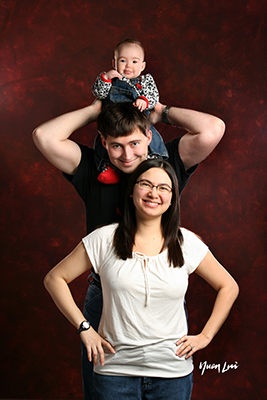
Microbiology
I‘ve always been interested in how biological systems function. When I was thirteen, Stargardt’s Disease reduced my visual acuity from 20/20 (perfect vision) to 20/200, the threshold for legal blindness. Suddenly I was a student with a visual impairment.
One of the accommodations offered to me was waiving core math and science classes. I was stunned. I declined that offer. I soon learned that there were very few visually impaired students in my high school and even fewer who had pursued math and science. That got me fired up, and I think that’s where my journey in STEM first started.
I worked closely with my teachers to make classes and labs accessible. I enrolled in a college-preparation program DO-IT Scholars, which turned out to be an incredibly useful resource. I received encouragement to pursue college and a career in science, learned about self-advocacy, and received advice from staff, mentors, and other participants.
My tenth grade biology teacher was particularly inspiring. To enhance our labs, she joined a program to borrow equipment from a well-known, local cancer research center. I was really excited to visualize DNA on a gel, but I had great difficulty navigating the clear pipette tip into the tiny gel wells. We spent several hours practicing by gently probing the edges of the wells instead of locating them visually, a technique I would utilize daily as a research scientist.
During college at the University of Washington, I refined my scientific interests through a combination of course work and undergraduate research. My first taste of real bench science was during sophomore year in the department of microbiology. I characterized denitrifying microbial life present in an environmental sample from the Black Sea. I learned to listen for thaw in frozen liquid reagents instead of looking for ice chunks. During Ethanol precipitations to isolate DNA, we discovered that though I couldn’t see the tiny DNA pellet, I could identify the slight orange refraction of the pellet when the tube was rotated under a strong light source. Experiences like these gave me confidence that I could make bench work accessible.
I next joined a lab in the department of biochemistry focusing on gene expression. I spent two years investigating an intronic regulatory region in Muscle Creatine Kinase, a gene commonly used to model muscle gene expression. I assembled a large arsenal of widely applicable molecular biology bench skills and became proficient in experimental design, good record keeping, and, through a variety of presentations, science communication to multiple audiences. However, I also encountered some serious limitations due to my vision. After much deliberation, I decided that I needed to take a more genomic approach to gene expression research to optimize for model systems with which I could more easily work.
Following graduation from college, I joined a lab in the Department of Genome Sciences at the University of Washington as a research scientist, where I developed innovative procedures and technologies to sequence genomes more efficiently and informatively.
Andrea
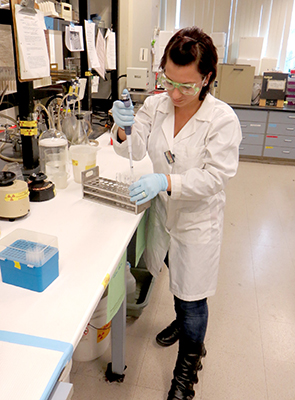
Disease Research
I was always interested in science, ever since I was a child. My parents encouraged this and bought me a junior microscope set, made mostly of blue and red plastic. I would spend hours shoving bugs and any other willing (or unwilling) creatures under it. I was constantly searching for and exploring scientific answers to the natural world.
For nearly ten years of my adult life, it felt like Chronic Lyme’s Disease (CLD) tried to defeat me, but ultimately I won out. I was undiagnosed for eight of those ten years, despite the fact that I saw a great many doctors. This inspired me to pursue my dreams of becoming a really solid research scientist, despite the fact that on a daily basis I was dealing with a multitude of symptoms.
Feeling sick became a part of everyday life for me, but I didn’t let that stop me. Because I was undiagnosed for so long and untreated, my grades suffered but I never gave up, not even after getting disqualified from a major university or being told that I should settle on a more menial career path. I made sure that nothing could stop my momentum and vivacity—not my cane or wheelchair and not the migraines, insomnia, or Bell’s Palsy. My journey was underway and I was determined to stay on the path.
Despite the fact that I have recovered from CLD, it has left a handful of challenges that I must overcome on a daily basis. I have nerve damage and suffer from tremors and other neurological issues. This has made academic pursuits challenging, but after 13 years of pursuing my degree, I’m reaching my destination as I prepare to enter the workforce as a research chemist with a background in molecular biology and biotechnology.
While I have been forced to work through many daily encumbrances, I manage to keep a positive attitude, which seems endless at times, thankfully. It is because of this and my inspirational mentors, including the doctors who first diagnosed my CLD and ultimately cured me, that I was able to realize my dreams and fulfill my ambitions. I look forward to helping and inspiring others throughout my career in disease research. I know I offer a unique perspective to this field, with my first-hand experience with such a tenacious disease. Although I still have to be on routine medication and therapy, I am grateful and feel privileged and proud to be a scientist.
Joe
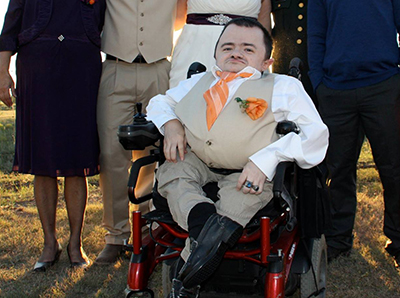
Education
I was born with brittle bones. By my teens, I had dozens of breaks, but they slowed as I went through high school. I had parents who fought to ensure I led as normal of a life as possible. For example, I lived in dorms as an undergraduate student in a university near my hometown. I was then accepted to Teachers College, Columbia University for my master’s degree. I moved to New York City, finished my master’s degree, and then moved to Seattle to get my doctoral degree in education at the University of Washington.
I have been very interested in research methods, especially statistics. Using advanced methods to analyze policy data is my career goal. In 2014, I graduated from the University of Washington with a PhD in education: measurements, statistics, and research design; my thesis was titled “Retention of Undergraduate Students with Disabilities at the UW: Advancing Retention Knowledge and Policy Implications.”
My journey in STEM has required overcoming physical and psychological barriers. While I am at times around people with disabilities, my social circles primarily include people without disabilities. Fitting in seems to be harder with each passing year. I could rationalize this when I was younger, hoping a greater education and professional success would translate into social acceptance, yet this was always somewhat of an illusion. I do have a close group of friends and family that provide emotional support, but this doesn’t take away my sense of exclusion.
All of my life I’ve used my intellect to solve problems, yet with each passing year the limits of intellect to find a sense of satisfaction in life continue to be evident. After spending well over a decade in higher education as a way of coping with life, I’m now focusing on dealing with emotions I have long suppressed.
Ultimately, I realize that life can be one struggle after another for a lot of people, not just those with disabilities. My personality will not let me accept just treading water in life. I always want to achieve more and push myself harder. Quitting the fight has never been an option. That’s why I believe that while my journey has been long, it has really only just begun.
Todd
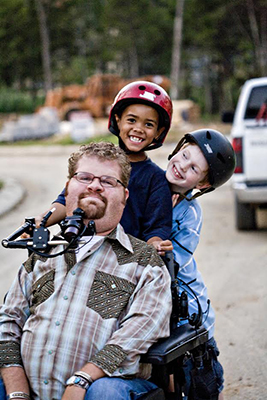
Technology & Independence
My life has never been easy, but I am grateful every day for the opportunities I have received and experiences I have had. I have C4 complete quadriplegia, but that hasn’t stopped me from pursuing a great career in science and technology, marrying a great woman, and continuing to serve my community in every way I can.
I earned my associate’s degree in computer programming from RCH Technical Institute concurrently with my high school diploma, and I went to work for a software company specializing in medical products immediately following. I opened my own consulting company called C4 Consulting, where I serve the electronic personal health information space. My company is responsible for protecting patient data in hospitals and laboratories across the United States.
I have also been a motivational speaker for years, telling my story and encouraging others to follow their dreams. I also opened a foundation in 2008 to provide independent technologies to people with spinal cord injuries. We just recently launched a new program called “Demonstrating Independence,” which will provide more technologies to people for managing life tasks on their own.
I have always been interested in how science can give independence to people who may otherwise have fewer options for engaging in our society. Technology is a growing industry that is constantly coming up with newer and better methods for people with disabilities to be independent in whatever career they choose. My journey in STEM is intricately tied to this changing technological landscape.
I owe a lot to mentors and other supportive people for giving me great experiences and helping me with career skills, which led to a job in the technology field. I value relationships and staying close with those you care for. I will always be a man with purpose, fighting for the important things in my life. I look forward to many more years with my family and giving back to society.
Jae
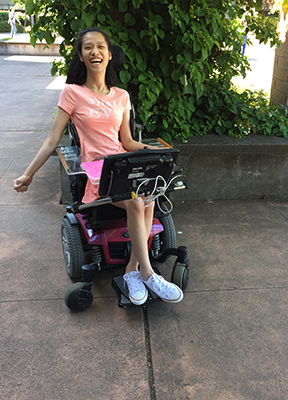
Transition Specialization
During my journey as a student and a lover of science, there have been tears as well as smiles. Although it has been rewarding, it hasn’t been easy. My life really changed in ninth grade, when I started going to general education classes. Up until that point, I had been participating in a Learning Resources Center that focused mostly on social skills and skills of daily living.
When I shifted to a different Learning Resources Center at my high school, I was enrolled in more mainstream classes. This was great. I had always wanted to be a regular student who attended mainstream classes every day—struggling with real academic work and challenging homework just like everyone else. Looking back, I wish I could have made the change earlier, because I wasn’t fully prepared for it. I didn’t have a lot of experience doing homework and assignments. It was hard for me to sit at a desk and listen to teachers talking for an hour. I just wasn’t used to that kind of learning.
In the evening, I often cried because I was flummoxed about everything going on in my classes.
I asked a principal to transfer me to another school with a specialized education system. She said “no” and kept pushing me to learn how to be successful. It wasn’t easy, but I started to get used to my new life. I got an excellent communication device called ECO, which gave me a voice to express my feelings and the chance to move forward with my life. It expanded my world beyond my imagination.
It was still hard for me to catch up with my classmates and it took me extra time to do things. Luckily, with my friends’ help, I caught up. During those years, I also discovered my dream: to be a transition specialist who helps disabled students be successful in high school, prepare for college, and overcome challenges. To do this, I need to understand the different kinds of assistive and mainstream technology, which builds on my interest in STEM.
Many people have helped me be successful in my journey so far—my transition specialist, friends, school staff, and family. At first, I wasn’t sure if I would be able to go to college and pursue my dream, but I was encouraged to face the challenges, especially from my transition specialist. She believed in me more than anyone. I am thankful to have her in my life.
I think that all human beings are on a journey of some sort. I hope I will impact other peoples’ lives in the same way that my transition specialist impacted mine.
Jessie
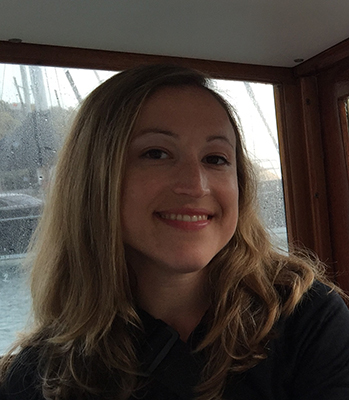
Information Technology
Growing up, I spent a lot of energy trying to disguise my disability and blend in with my peers. I have always been fascinated by the way things work and gravitated to math and science courses where my learning disability was less of an obstacle.
I got more focused on my journey in STEM when I participated in the DO-IT Scholars program, a transition- to-college program for students with disabilities during high school. This experience was liberating! I finally had a peer group where I could talk openly about my disability, the struggles I have had, and strategies for success. During the program, I learned to advocate for myself, gained confidence about the prospect of going to college, and made lifelong friendships.
I come from a long line of engineers, so when I entered college, I knew I wanted to go into the sciences and found my calling in the information sciences. College was an opportunity for me to combine my diverse interests, a place where I could work on an Informatics degree and a minor in Dance. A great day included engaging in a morning ballet class, going to class and then spending the evening in the computer lab working on database projects.
One summer in high school, I spent a week working on a project in a virtual reality lab. What a great experience to be exposed to cutting edge research! I was able to continue working at the lab as a summer intern, and then later as part of an independent study course.
During college I participated in numerous internships, one taking me as far away as the World Bank in Washington DC. While I had to work really hard to keep up in college, these experiences helped me realize the differences between a classroom setting and a job. I gained confidence in my skill sets and the contributions I could make in the workplace.
My STEM journey really got going with my first job after college. I was working in a technology leadership rotation program at Washington Mutual Bank. Over the course of a year and a half, I worked in the core retail banking systems, commercial banking technologies and the enterprise data warehouse.
Today I work on the Amazon Web Services Cloud Commerce platform where I focus on payments and international expansion. At work, I use text-to-speech software to review my writing and assist in reading documents quickly. What I enjoy most about my job is tackling tough technical and customer experience problems with a cross-functional team.
Daniel
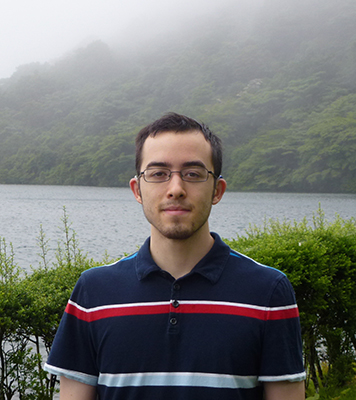
Research & Computing
I was born deaf, but fortunately received education in a public school district that had a program to accommodate deaf students. In my classes I had sign language interpreters and note-taking services. These accommodations played a major part in my academic success in high school, helping me graduate with highest honors. After high school, I enrolled at Williams College, a small liberal arts college in rural Massachusetts.
I have used summer time well during my journey in STEM. During high school, I attended the AccessComputing Summer Academy for Advancing Deaf and Hard of Hearing in Computing at the University of Washington. This was a fully-funded, nine-week residential program for deaf and hard of hearing students chosen from a nationwide pool. While at the Summer Academy, I was able to visit companies like Google and Microsoft and attend research presentations given by computer science graduate students.
I was intrigued by the research presentations and wanted to get involved in my own research projects. I realized that summer was a great time to engage in research. I’ve participated in two Research Experience for Undergraduates (REU) programs. These programs, funded by the National Science Foundation, hire students each summer to work on a research project at a college or university. One summer, I worked at the Bard College REU on an applied machine learning project.
The following summer, I was at the University of North Carolina at Greensboro’s REU, performing combinatorics research. These REUs were my first experiences in a real job situation, so I set up accommodations for myself. At Bard College, they hired sign language interpreters who came to campus when students or faculty gave research presentations. Unfortunately, interpreting a technical talk is a very difficult task because of the technical jargon and the need for specificity. So, while I was at Greensboro, I decided to rely entirely on a frequency modulation (FM) system, which amplifies the instructor into a speaker just for me to hear.
My post-college plan is to pursue a Ph.D. in computer science. Recently, I sent out applications to ten computer science Ph.D. programs and a variety of fellowships and scholarships. I’m not sure where my STEM journey will take me, but my hope is that graduate school will prepare me for my ideal career as a professor or a research scientist.
Frank
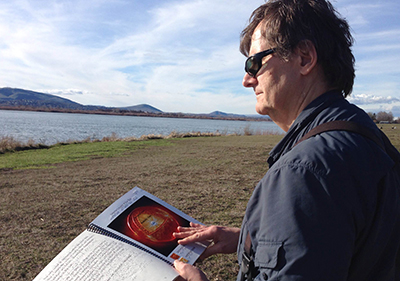
Engineering
My journey in STEM began in grade school in the form of a gift. My grandfather gave me an old book on radio theory. I loved it. Even though I was blinded a few years later, it never occurred to me to try a different path than electronics! After high school, I attended Montana State University, where I majored in electrical engineering and was awarded the nation’s largest scholarship for students seeking degrees in STEM fields.
I pretended that I could still see in those days. I never stopped being proud, but eventually I did start using a long white mobility cane. My mentor Fred, who hired me as an electronics technician in the Physics Department, taught me how to solder and debug circuits. Together we designed and built all kinds of great tortures for the instructors to inflict on their students in the physics labs. I still had a small amount of vision in those days, and I used an old blackboard, white chalk, and a magnifying glass to solve many of my math problems.
I worked for Battelle Pacific Northwest Laboratory for many years as an electronics technician, a senior computer consultant, and an electrical engineer. During these years I also earned my masters degree in electrical engineering from Washington State and became a registered professional engineer.
One of the fun things we did in our spare time at Battelle was to build a robot called the Cubot that could not only solve the Rubik’s cube puzzle mathematically, but could also physically solve the puzzle, turning the faces of the cube with its manipulators. I programmed the robot’s speech using 80186 assembly language.
In the late eighties I decided I wanted to attend Space Camp—the ultimate playground for lovers of the space program. Today, the camp has a great program for students who are blind, but, when I applied, they would not even consider such an incursion. It took the support of two senators and the assistance of the white cane law for me to finally become the first blind person to attend Space Camp.
When Galileo studied gravity, he didn’t just drop two balls of different weights from the Leaning Tower of Pisa; he rolled them down an inclined plane, which allowed for easier examination. It amazes me how unique approaches from intelligent people can solve life’s mysteries. This is why I have devoted my life to the field of science and engineering. It’s been a great journey so far!
Svetlana
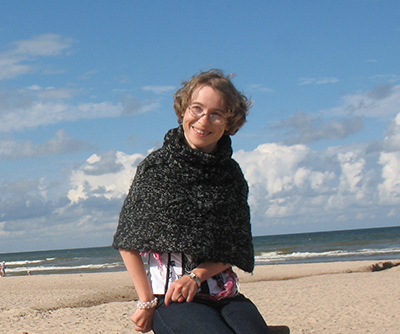
Research
My lifelong journey in STEM got off to a challenging start. I was born with a severe form of cerebral palsy that affects most of my body. Throughout my life, I have had to overcome many obstacles, physical as well as social.
In 2002, I came to the US from Latvia, a small country in Europe where doctors gave me a prognosis that I would never walk. Some of my middle and high school teachers refused to teach me, reasoning that there would be no way for me to utilize anything I learned. At the time there were few, if any, accessible buildings and social stigma towards those with disabilities was high. However, time changes and today I can walk—though I do use a wheelchair at times. I’m pursuing a Ph.D., and I excel in my academic pursuits.
I have always had a passion for knowledge. I eventually enrolled at Washington State University (WSU) to pursue a computer science degree because it has such a large variety of applications. During my junior year I participated in research for the first time through a Research Experience for Undergraduates (REU) program. I continued to build my research skills during the next couple of years as I participated in the Undergraduate Biology and Mathematics (UBM) program. My REU work resulted in a refereed conference paper, and my UBM work was showcased at the annual conference at the National Institute for Mathematical and Biological Synthesis. I also regularly participated in poster presentations and symposia at WSU and was the lead author on two refereed journal publications and a coauthor on a third paper.
I graduated with a bachelor’s degree and stayed at WSU to pursue a Ph.D. in computer science. My Ph.D. research is centered on machine learning methods in high dimensional spaces. I apply it to bioinformatics, neuroscience, imaging, speech recognition and many other fields.
I’ve put a lot of time and energy into my studies and that has really paid me back. My achievements have been recognized at the national level several times. I was awarded the prestigious Barry M. Goldwater Scholar Award, I was chosen as a finalist Computing Research Association’s Outstanding Undergraduate Research Award Competition, I received a Graduate Research Fellowship from the National Science Foundation, and I was awarded a grant to go to Norway to conduct a research in one of the most prestigious centers for neuroscience.
My goal is to become a scientist and benefit society through my research, teaching, and scientific work.
Erica
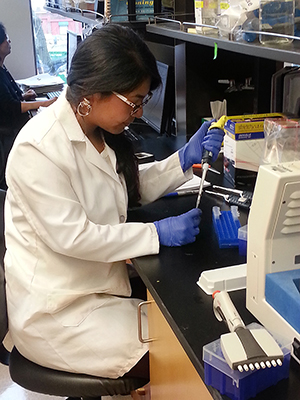
Public Health
I grew up in a rural area of Washington State. I am Mexican-American and have Erb’s palsy, which limits the mobility of my right arm. Coming from a rural, underserved area has made me passionate to improve healthcare accessibility. My interest in STEM fields is connected with my background and the communities I would like to serve as a physician.
Many Latino families in central Washington communities work in agricultural jobs. Despite being one of the toughest jobs, most migrant workers have no choice but to continue working in such conditions to support their families. Most farmworkers do not have health insurance or access to healthcare. Pursuing biology and public health majors was perfect for what I see myself doing in the future. My goal is to provide equal opportunities for all people seeking healthcare and to improve healthcare in underserved communities.
My STEM journey has taken me to many great places. In the summer of 2011, I attended the ten-week Initiative for Maximizing Student Diversity Teach Lab program. Later that summer, I studied abroad, analyzing the public and private healthcare systems implemented in India. The next summer I participated in the six- week Summer Medical Dental Education Program at Columbia University in New York City. Later that summer, I participated in a public health exploration seminar in Chile. The following year, I did an internship with Seattle Biomedical Research Institute in the Protein Production Core as an undergraduate research assistant. During the summer of 2013, I completed a ten-week internship at the University of Washington (UW) Bioengineering Department as an undergraduate research assistant and then went to a healthcare seminar in Italy.
Being part of the AccessSTEM program allowed me to network and build connections with people at the UW. I have also reached out to other programs on campus that support underrepresented minorities going into STEM fields. I am also part of Lambda Theta Alpha, Latin Sorority, Inc., where I serve as Chapter President. Taking on this leadership role constantly pushes me out of my comfort zone and allows me to grow as a person and a leader.
As a young Latina, growing up in rural Pateros, WA, I never thought I would do half of the things that I have done already. There have definitely been times when I remind myself to not only accept myself with my disability, but to love myself and the stronger person I have become because of it. When I look back at who I was when I entered the UW, all of these programs and experiences has made me a more confident, accomplished, and educated woman.
Chris
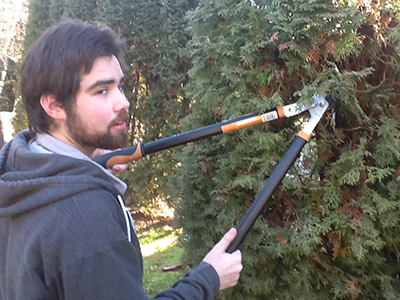
Natural Systems
I am a student at Clark College in Vancouver, WA, pursuing a bachelor of science degree in forestry. I have always loved learning. Gaining knowledge about the inner cogs of the universe is enticing.
While growing up, my favorite TV shows were on the Discovery Channel, History Channel, and Animal Planet. I now learn through the Internet, science news, TED videos, various podcasts, YouTube channels, and online college lectures.
My attention deficit disorder (ADD) and dyslexia make it hard to concentrate on reading. I concentrate better when I use audio books. Typing is slow for me and filled with lots of misspellings. I use speech recognition and spell-check software to prevent errors.
I don’t regret having my disabilities. Rather, I enjoy seeing the world differently than others by focusing on one aspect at a time. I can also see the big picture and feel absorbed into it. Many great thinkers are suspected to have had ADD and dyslexia, including Thomas Edison, Albert Einstein, Winston Churchill, and Richard Branson.
A futurist, I enjoy following Jason Silva and Elon Musk regarding new concepts and see great things that will shape the future: graphene, augmented reality, crowd sourcing, game-ification, even asteroid mining! Smart technologies, sensors, and systems will be connected to the singularity that is the Internet so that cars may be safely self-driven and good health habits will be encouraged through gaming techniques. Simple solutions may be found, like harnessing algae for black oil, carbon storage, and nutrition.
My STEM journey embraces the fun of discovering how things are structured and related and exposing misunderstandings from the past. My high school horticulture teacher, Vaughn, helped me realize my passion for working with plants, whether in a greenhouse or forest. Volunteering with several forestry efforts such as removal of invasive species and working at a forested summer camp are steps toward a career using plant biology. I seek to understand natural systems to find efficient solutions for current problems.
Christopher
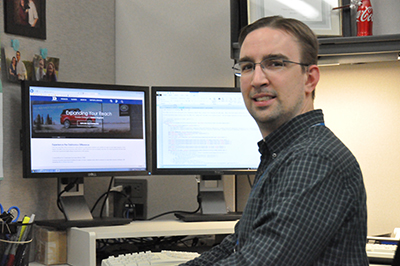
Graphic Communications
My STEM journey began in high school, when I first started to think about what I would do after graduation. During my junior year, I learned about a summer program that introduced computing fields to high school students who were deaf or hard-of-hearing, and offered college credit for participation in summer classes. I signed up and traveled to Washington State to participate.
I already had an interest in computer technology and through this experience I was able to work with computers and meet deaf professionals in computing fields.
After I graduated from high school, I spent one more summer in the AccessComputing Summer Academy for Advancing Deaf and Hard of Hearing in Computing program. I was accepted to study at Moorhead State University of Minnesota (MSUM). Prior to attending MSUM, I had a strong interest in web development and graphic design, which led to me starting some freelance work for a few clients in my hometown.
At that time, computer technology and the Internet were exploding. Because of this, I decided to pursue a bachelor of science degree in graphic communications with an emphasis in multimedia at MSUM.
Due to my profound hearing loss, MSUM provided Real Time Captioning (RTC) in the classrooms. RTC is a transcription service, done by a court stenographer
who transcribes spoken words into text in which then appears on a computer screen. The concept is similar to closed captions we see on videos or on television. RTC allowed me to fully participate in classes. I graduated from MSUM with honors (magna cum laude).
After college, I started working at Daktronics, Inc. in a web and graphics marketing role for corporate websites. Over the years, my role has evolved into a web administrator role, in which I manage the corporate website. Participation in large meetings can be difficult for me, especially when people call-in to participate by teleconference. However, using RTC in these types of meetings solves the access problem.
My STEM journey has required the use of assistive technology. Without cutting edge tools, life in school and work would be much more challenging for those of us with disabilities. The new technology being developed today will continue to help ensure equal access for everyone.
Michael
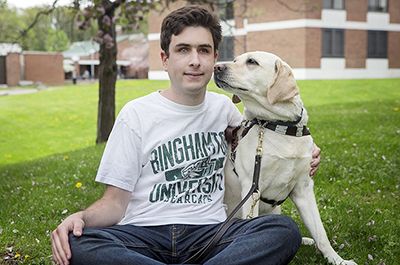
Software Development
My journey as a computer scientist began around the time I entered high school. I had been interested in computers from a young age, but it was around this time that I began to learn to program a computer.
When I started college, I chose computer science (CS) as a major. I think I was the first blind CS major at Binghamton University, and I quickly came to realize that each semester would bring new challenges for making courses accessible. I am totally blind and also hearing impaired; I wear two cochlear implants. Luckily, the Services for Students with Disabilities office assisted in overcoming these challenges; for example, they purchased an embosser capable of printing braille and raised line diagrams. These diagrams allowed me to access the visual aspects of my courses, such as graphs in math courses and circuit diagrams in computer hardware courses.
Soon after I started my first semester, several friends and I launched RS Games, an online gaming network that allows blind players to engage in a variety of board and card games against players from all over the world. The games quickly became wildly popular in the blind community. It was, and still is, an amazing feeling when the code I write has a positive impact on people’s lives. Working on RS Games solidified my interest in computer science.
My journey continued with an internship at Amazon on the textbook rentals team. That summer, Amazon launched textbook rentals, and I helped make the launch possible by developing the system that dispatched reminder emails to customers. It was awesome to be a part of the launch of a new project that would be used by college students all over the country. I enjoyed the challenges of working at Amazon, so when I was offered a full time position at the end of my internship, I accepted.
After I graduated from Binghamton, I moved to Seattle to begin work at Amazon as a software development engineer. At work, I use the NVDA screen reader, which reads the text on the screen out loud and allows me to navigate using the keyboard. I travel independently with the help of my guide dog, a yellow Labrador named Delta.
I do not know where my career as a software developer will lead me. I intend to take things one day at a time, learning as much as I can and improving my skills. I am excited for how my career will allow me to be a part of bringing about improvements that will have a positive impact on the lives of many people for years to come.
Daniel
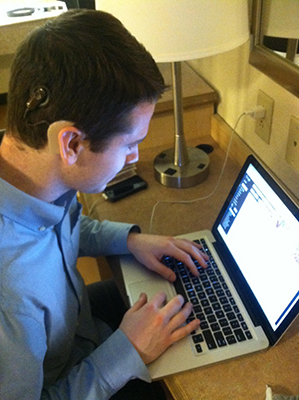
Accessible Technology
“Is it working?” It sounded as though Minnie Mouse was talking, but I could see clearly that the person across from me was my mother, not an over-sized rodent in polka dots. The phrase was not as dramatic as Alexander Graham Bell’s, “Mr. Watson—come in here,” but for me, it was just as momentous. I was thirteen. As my cochlear implant was activated, those three words were the first I had ever heard clearly. I had just entered high school and this was the crossroads in my journey towards independence in the world and a critical impetus toward pursuing a career in a STEM field.
My cochlear implant coupled with sound field technology were key components in my achievements in mainstream schools. This was particularly important because my academic interests naturally gravitated to science and math. My local high school was known for its strengths in those disciplines and offered AP classes both in calculus and computer science that I was able to take advantage of. For me personally, my implant demonstrated the power of technology to create access to sound, accessibility to educational opportunities, and the prospect of a fulfilling career. During high school, I took the most challenging classes available, participating in math and computer science honor societies, and looked forward to a career in technology.
Attending college at the Rochester Institute of Technology (RIT) served to further define my interests in web and mobile app development. The summer after my freshman year, I attended the AccessComputing Summer Academy for the Deaf and Hard of Hearing at the University of Washington and took a course in programming for web development. The experience led me to choose a major in information technology with a concentration in web and mobile app development. My work in my major ultimately prepared me for a summer internship at Bank of America/ Merrill Lynch.
During my senior year at RIT, I worked at a start-up, MotionSavvy, which seeks to use 3D motion sensing technology to develop applications to translate sign language into text. This offered exciting possibilities for improving accessibility for deaf and hard of hearing along with the chance to learn about business from the ground up.
I was excited to return to Bank of America as a technical analyst in the Global Markets group following graduation. I hope to continue to pursue my interests in developing technologies that promote accessibility.
Angela
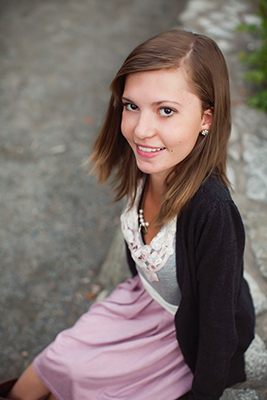
Medicine
I attend Gonzaga University. I’m studying psychology on the pre-med track in order to prepare myself for medical school. Between taking classes and having fun with my friends, I hold a student assistant job in one of the offices on campus.
I am an officer for the Gonzaga Environmental Organization where I am able to share my passions for protecting our planet and promoting sustainability. I also volunteer at Seattle Children’s Hospital. In addition, I have volunteered with Campus Kitchens at Gonzaga providing meals to those in need.
I was born with Muscular Dystrophy (MD), a disease that causes significant weakness in all my muscles. The specific type of MD I have limits my ability to walk quickly and for long distances and to climb stairs. No doubt, living with MD has been a challenge. However, this disease has made me more aware of my abilities, which in turn makes me determined and capable of utilizing my college education to improve the lives of people and inspire others to push themselves, just as I have pushed myself.
My journey in STEM includes summer internships through the Center for Neurotechnology (CNT) at the University of Washington. These were amazing experiences. I was able to work on experiments and gain valuable research experience. I studied the effects of cannabinoid receptor antagonists and agonists on slices of a mouse cerebral cortex to analyze activity in the brain. These experiences taught me that I still have so much to learn in my undergraduate career. My experience with the CNT has solidified my goals for the future in the field of medicine and possibly research as well. I hope to continue my work in the same lab and look forward to engaging in more complex research.
My post-college professional goals may change with time; however, my current plans are to enter the medical field and specialize in pediatrics or psychiatry. I hope to help people with conditions similar to mine.
Hamid
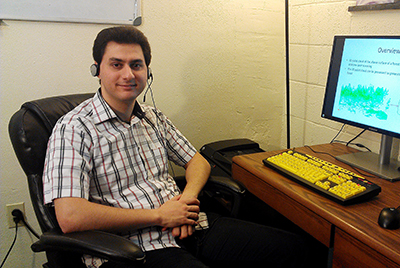
Computer Science
Internships have had a huge impact on my journey in STEM. People may not know what possibilities they have until they get the opportunity, or someone may get stuck in a dead-end job if they can’t try it out first in an internship. It was especially important for me as a person with a visual impairment to discover where I should focus my career.
In summer 2014, I completed an internship at the University of Kentucky. As a third year computer science Ph.D. student, I took this opportunity to see if this would be the lab where I would finish my Ph.D. research. The project I was working on was in collaboration with the Department of Forestry. The problem I looked at was how to model a forest using airborne LiDAR (Light Detection and Ranging) 3D point cloud, which has several millions of points to be processed.
After being involved in the project, I realized that my visual impairment is not a barrier at all, but a hidden power for such a project! Working with 3D images is something that needs a strong mental imaging capacity, rather than a good visual acuity that can only capture one angle to the 3D image at a time. People with vision problems naturally develop stronger mental capacities in order to compensate for their sensing inefficacy,
and here is where I can claim I can potentially be more successful than to a sighted peer. I received a very promising initial result, so now I’m developing this work into my Ph.D. dissertation.
The project has helped shape my future path clearer as I am now certain that I would want to get into a research-based career in STEM, such as a tenure-track professorship or a research position in related industries. It also helped me understand my weaknesses and identify skills I’d like to learn so that I can shape my coursework during the rest of my degree program.
People with disabilities often fear that their disability will limit what they’ll be able to do after school. An internship can be an opportunity to assess a situation in practice, seek accommodations, and alleviate the fear. I can say from my personal experience that persevering to reach a goal can help to overcome fears and improve self-confidence—necessary traits regardless of your aspirations.
The Importance of Community
"I learned to be determined and never give up, and, with the help I need, I can take take on anything" - Fred
Success rarely happens in isolation. Student success is impacted by many stakeholders, as illustrated in Figure P.1—people with disabilities themselves; parents and family members; peers; K-12 teachers, counselors, and support staff; postsecondary administrators, faculty, and staff; legislators and policy makers; government service providers; and community leaders and group members. The Disabilities, Opportunities, Internetworking, and Technology (DO-IT) Center at the University of Washington, with funding from federal, state, and private sources, has addressed issues in most of these areas with projects, publications, and web resources described at www.uw.edu/doit.
Specifically, in AccessSTEM, AccessComputing, and other programs led by DO-IT, mentor, peer, and near-peer support occurs both in person and within an e-mentoring community. Participants are mentored within a group, thus many contribute to conversations. Participants also disseminate academic- and career-enhancing resources that benefit all community members. Benefits of the e-community approach may include the following:
- Individuals benefit from the experiences of a large group of mentors, peers, and near-peers.
- Mentors can specialize in areas of greatest strength.
- Mentors learn techniques from each other by attending to the communications that take place.
- The program performs successfully even though some mentors are less available and skilled than others.
- Using asynchronous, text-based communication on the Internet eliminates barriers posed by other forms of communication with respect to location, schedule, and disability.
- Program administrators view all group communications that take place, thus making it possible for them to guide and contribute to conversations.
Most AccessSTEM and AccessComputing mentors are college students, faculty, engineers, scientists, or other professionals who have disabilities. Mentees are pursuing STEM careers, and they all have disabilities, including vision, hearing, mobility, health impairments and specific learning disabilities. Frequent electronic communications and personal contacts bring mentees, peers, near-peers, and mentors together to facilitate academic, career, and personal achievements.
DO-IT’s mentoring program received national recognition when it received the 1997 Presidential Award for Excellence in Mentoring “for embodying excellence in mentoring underrepresented students and encouraging their significant achievement in science, mathematics, and engineering.” It also received the National Information Infrastructure Award in 1995 “for those whose achievements demonstrate what is possible when the powerful forces of human creativity and technologies are combined.” Research results suggest the success of the DO-IT electronic community in promoting positive college and career outcomes. But more importantly, the DO-IT e-mentoring community has documented its value in the successful lives of its participants and the willingness of those who were once protégés to support young people in the community as they were supported in their youth.
In the following section of this book, students share stories about the importance of community and the influence of supportive individuals in their pursuit of STEM careers.
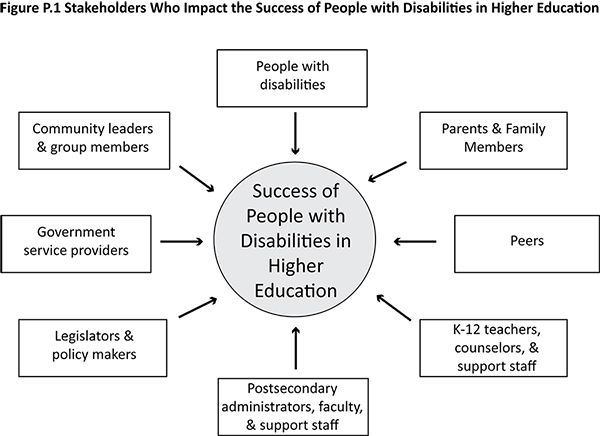
Imran
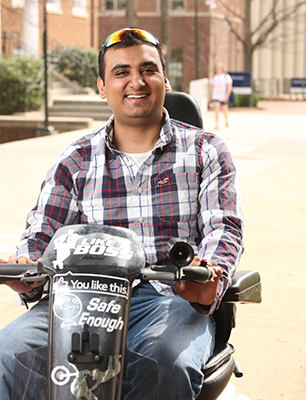
Engineering
I graduated with a degree in system and information engineering from the University of Virginia (UVA) and am currently pursuing a master’s degree in system engineering at Cornell University. I was diagnosed with Friederich’s Ataxia (FA) when I was 18 years old.
Even though I had symptoms since the age of 12, it wasn’t until my senior year of high school that I realized that my condition was serious. After undergoing rigorous testing, seeing a multitude of doctors, and receiving some misdiagnoses, I was finally diagnosed with FA, a degenerative genetic disorder. I had never heard of FA before, but it was about to change my life drastically. As I learned more through in-depth research into the disorder, I became depressed about my future. I graduated from high school a couple of weeks after my diagnosis. With what I knew about FA, I did not think I would be successful at college, although I did not tell anyone that.
Regardless of knowing that failure was a possibility, I continued my education with the same confidence in my abilities that I have today. I always knew and trusted my abilities, but my FA progression and how it would impact my education and life was always a question.
I gained tremendous support from family, friends, professors, advisors, career counselors, doctors, physical therapists, and especially from the Student Disability Access Center at UVA. That support helped give me the confidence needed to achieve greatness despite obstacles I face. With their support, I have been successful—participating in multiple internships and initiating many projects.
I also started a Facebook page called “Fight Against Friedreich’s Ataxia,” which now has over 3,000 members. Many of them are also experiencing life with FA, and they have been willing and courageous enough to share their unique stories with us. The page serves as a support group and helps raise awareness about Friedreich’s Ataxia.
I actively participated in the Disability Awareness Week at UVA – organizing and planning events and encouraging my peers to attend. I continue to raise awareness about inaccessibility and negative messages about disability at UVA and Cornell University.
Although FA may have slowed me down, it has also taught me valuable life lessons. Ultimately these challenges and my experiences have made me who I am today, and for that I am grateful.
Fred
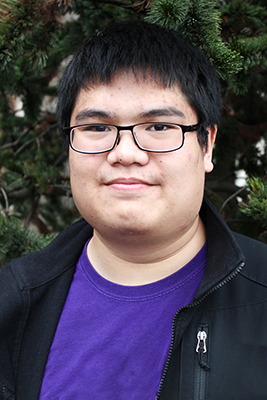
Engineering
I have always had an interest in math and science. Something about these fields has always just made sense to me. When I started at Bellevue College (BC) in 2011, I tested into calculus. However, I have always struggled with English classes—particularly writing. My first quarter of college was especially hard because I struggled with not only taking too many classes, but passing English as well.
I found that to solve some of my problems, I needed to reach out to a community of supports. Through consultations with an academic coach, the Autism Spectrum Navigators program at BC, and some friends and classmates, I realized that it would be better for me to take fewer classes, giving me more time to focus on my work.
After that, I started performing better in my English classes, learning to focus on only one or two things at a time. My hard work and patience eventually paid off—I graduated BC with a two-year degree after passing Calculus 4 and English 235.
I was accepted as a transfer student at both the Seattle and Bothell campuses of the University of Washington. Not sure about the best way to analyze those options, I connected with my community of supports once again, who helped me realize that Bothell’s smaller, more intimate campus would better suit my educational needs.
I chose to major in computer science because of my passion for mathematics and programming, and because there are expanding job opportunities in computer science. Eventually, I would like to work for a large tech company, such as Microsoft. Ideally, I would be programming video games. I want to generate ideas with others to create the best products possible.
Though it brings challenges, my disability has also made me who I am, and I am thankful for that. I’ve learned to be determined and to never give up, and that when I get the help I need, I can take on anything. The biggest hurdle I’ve had to overcome is how to sacrifice, whether it be summers to take on classes at school or learning how to drop a class that just doesn’t fit with my workload. Luckily, I have developed a strong community of people who genuinely care about my success.
Alexander
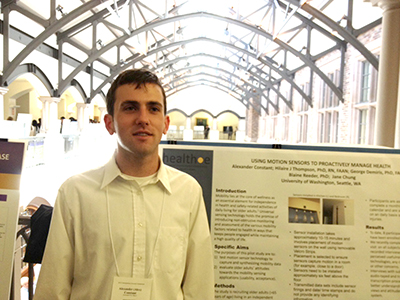
Information Technology
Autism was something I never talked about or thought of in depth when I was younger, even though I had to accommodate it throughout my high school education. For the University of Washington (UW), I wrote one of my application essays about my experience with autism, which helped me feel empowered by having a disability.
When I was accepted to college, no one contacted me about getting accommodations for my disability. During the first week of school, I went to a seminar where all diversity-related student organizations presented their materials. I attended a presentation and was surprised when some people sounded less positive than I imagined they would be about the disability community and services. This made we want to explore autism more and to delve into other facets of disability culture.
In college, I quickly realized that I needed the accommodations that I used in high school. As such, I ended up getting re-diagnosed for autism, which allowed me to learn a lot about myself. This took a very long time. I finally received my accommodations during my third quarter at the university. The academic accommodations have been very convenient and private.
I became interested in technology after doing research on “smart home” technology. I also worked as a student technician in the UW libraries, which pushed me to focus my major on information technology, which is the use of computers, storage, networking and other devices, infrastructure and processes to create, process, store, secure and exchange electronic data.
Though I have encountered some challenges, I have grown as a person and learned the positive aspects of the disability community and culture. I joined a large community called AccessSTEM after seeing fliers in the Disability Resources for Students office. Through a friend who also had a disability, I heard about the Autistic Self-Advocacy Network and a disability justice circle. Because of these networks and my own re-diagnosis at age 19, I feel more open about talking about my autism and autistic perspectives. I never want people to feel shame for who they are or what they represent.
Christine
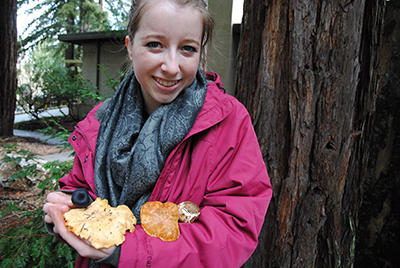
Biology
Having a learning disability has been the hardest obstacle in my academic career. In third grade, I could only do my math times tables by counting kidney beans. In fourth grade, I had an amazing teacher by the name of Ms. Marinos. She became my math tutor from fifth grade through seventh grade. Ms. Marinos helped give me much-needed confidence in my future academic work. I was even placed into the honors math and science program at my high school. I went to an all-women’s private high school in San Francisco with small classes, which helped me learn.
Growing up, I went to special summer schools and workshops that taught me the skills I needed to keep up with my classmates. I worked twice as hard as my peers, just to be at the same level of understanding. In high school, my grade point average was a 4.0. I understood that with a learning disability, I could never slack off, and that I needed a community of supportive people behind me.
For example, my parents made a huge difference. My mother and father are both very intelligent people who have degrees in higher education. My mother especially was there for me when I struggled with school as a child. She was a personal tutor at home for me and she dedicated her time to my learning. Her patience, persistence and dedication are the reasons I have a strong foundation in academia. My father majored in physics. He is the reason I love science and am pursuing a career in the STEM field. His overall knowledge about daily life and the way that he sees the world makes me intrigued about what else is out there in the world. My parents continue to support my academic career at college.
I am currently a second year college student at the University of California, Santa Cruz, where I am earning my degree in biology. Here in Santa Cruz, my main accommodation is being given extra time on exams in a distraction-reduced room. Along with the testing accommodations, I also receive textbooks and print material in an alternative form, and I have access to extra tutoring, which is provided through the University.
In college, I really enjoyed two general chemistry labs connected to my classes. I also like foraging for mushrooms on the UC Santa Cruz upper campus trails. I enjoy working with plants, and I am leaning towards a focus in evolution and ecology for my biology major. I’m currently applying for internships next quarter, and I will be leaving to study abroad for a semester in New Zealand next year. I am proud to be a STEM major and I can honestly say that having a learning disability has made me who I am today.
Jackson
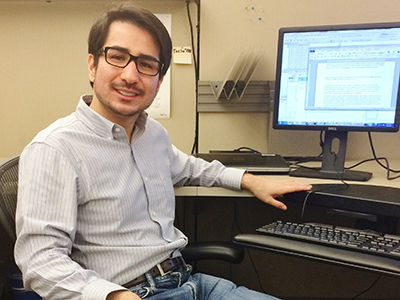
Technology & Programming
For me, having a strong community of supports was the difference between dropping out and graduating from college. Possibly due to my disability, it was hard to make friends and set up the sort of community of supports that I think many people develop naturally. My academic performance suffered as a result, and after a disappointing freshman year, I took a semester leave of absence to collect myself. When I came back, I quickly and deliberately created a strong community of supports both in and outside of school.
After reaching out to my academic advisor, I found out that my college offered several supports to its students for no additional charge, and I used these programs as soon as I could. I scheduled regular meetings with my academic advisor and enrolled in peer tutoring to help me improve my academic performance. I also reached out to Disability Resources for Students, and, after developing my relationship with them, they helped advocate for me with my professors and helped ensure that I received the proper accommodations, such as extra time on exams and peer tutoring.
I also reached out to several disability support groups, including AccessSTEM, to connect with others. I found that people who had a similar disability immediately understood what I was going through and expressed sympathy and support, without me having to explain my first year or apologize for my disability. Because of this, I made some of my strongest friendships during college through these groups, which also connected me with many career opportunities and internships.
While I was in college, I served as a paid information technology intern at a major government office in Washington D.C. through an internship placement program hosted by the American Association of People with Disabilities.
Probably my most important supporters were (and still are) my parents. During college, I connected with them on a daily basis to talk about things on my “to-do” list and make plans. They kept me on top of all my social, academic, and career obligations. Now as I transition to my adult life after college, I’m maintaining my own to-do lists independently.
Thanks to my community of supports, I came back from my disappointing freshman year and graduated from college. I’m now beginning my career as a programmer analyst at a major utilities company. I’m currently searching for my new community of supports as I begin this new part of my life.
Kelsey
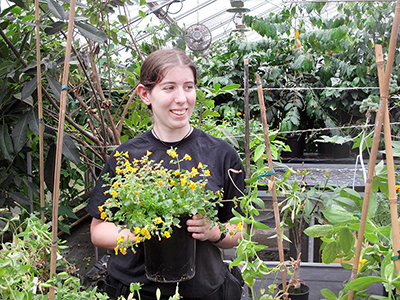
Biology
I’ve been interested in biology for as long as I can remember. My parents are scientists who worked at Massachusetts Institute of Technology (MIT), so I was always encouraged to be interested in science; listening to them talk about research helped me understand what science was like. I spent time running around in the woods, trying science experiments, looking at edible plants, and appreciating the amazing diversity of natural life.
Before high school, I attended some summer camp science courses. When the time came to start high school, I decided to enroll in a biotechnology program at a local vocational high school. I spent four years learning all about biology, how to use lab equipment, and how to design independent research projects. I learned to keep a paper lab notebook, but have since switched to keeping my notebook on my computer, since I have trouble handwriting due to joint problems and pain. For my senior capstone, I interned at Baylor College of Medicine in Houston, where I worked extensively on the Human Genome Project.
I attended MIT, where I took courses in both biology and computer science and had several undergraduate research experiences with faculty. I decided after a summer researching the genomes of bacteria found in the ocean that I really wanted to focus on evolutionary biology. I also spent a year studying molecular biology. After graduating with my bachelor’s degree, I worked for a year as a research assistant in a lab that studied how DNA and proteins interact in yeast. While working, I began having problems with my hands due to a connective tissue disorder, so my lab director and I ordered a special electronic pipette, which really took the strain off of my hands. I also got a special device to open tubes.
Currently, I am working towards a Ph.D. in biology at the University of Washington (UW) in Seattle. UW students and faculty are passionate about all areas of biology and the diversity of natural life. I have authored papers on my research, written a grant, presented my work at conferences, been a teaching assistant, and worked in the field in Yosemite National Park. Although I can no longer drive or stand up for long periods due to problems with my autonomic nervous system, I can lead a fieldwork team and navigate for a driver.
At the UW, I network with students, faculty, and staff with disabilities. My eventual goal is to be a tenured professor working in evolutionary biology. In my spare time, I also love birdwatching, gardening, and hiking (I use hiking poles and take lots of breaks).
Daman
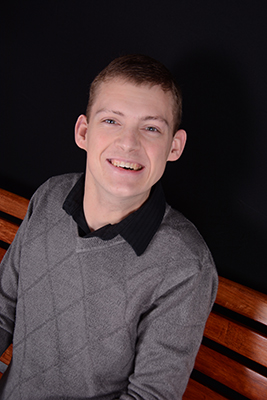
Technology & Advocacy
Because I have cerebral palsy, I have used technology since elementary school to complete my homework and other tasks. I am an avid keyboarder, but I have difficulty using a mouse. When I was quite young, technology became my passion. In high school, I also gained a passion for disability advocacy and culture.
I entered Western Washington University (WWU) with two goals: earning a computer science degree and starting a new community in the form of a disability awareness student organization. Ultimately, I decided that computer science wasn’t quite the right fit for me. Luckily, I discovered WWU’s Management Information Systems (MIS) program, which allows me to interact more with people. MIS is the ability to communicate business needs in terms of technology and then create or find the best solutions.
Within two weeks of starting college I met my second goal, when I co-founded “WWU Students for Disability Awareness” (SDA). I served as president for three years. This organization became the disability voice on campus, making disability a part of the diversity landscape. After three years, SDA evolved into the Disability Outreach Center to institutionalize and continue our advocacy work. My focus shifted to my academics, a new job, and national disability advocacy.
After a summer internship in Washington, D.C. the U.S. Department of Agriculture hired me as a virtual intern to improve their website accessibility. My role was to ensure that web pages and documents posted on the website were accessible. I knew this job was the start of my career because it combined both my passions: technology and disability advocacy.
A few years later, I began my masters in business administration in an accelerated one-year program at WWU. Simultaneously, the Federal Housing Agency gave me the opportunity to coordinate their web accessibility agency-wide. These two opportunities allowed me to learn how to implement accessibility across an organization.
Upon graduation, I was offered a position at SSB BART Group, a web accessibility consulting company in Washington, D.C. At SSB BART Group, I’m learning from other experts, which will allow me to advance my career. My next goal for myself is taking on and managing large IT accessibility projects.
Developing a broad network of people has contributed to my success. I constantly network with disability advocates, former professors, current and past colleagues, and people I meet at conferences and events. Facebook, LinkedIn, and personal interactions with my contacts help me open doors to new opportunities, serve as a mentor, and offer advice to others. Success for me comes from combining my love for technology and disability issues to build strong collaborations and change the world.
Brittany
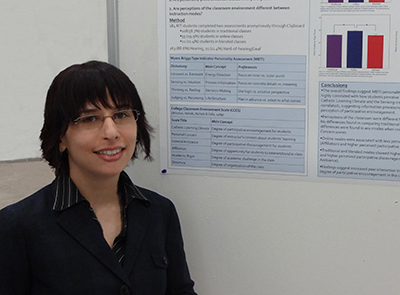
Psychology
As an individual with multiple disabilities that include cerebral palsy, mitochondrial disease, and hearing loss, having the right accommodations for my college career was critical, but knowing what accommodations I needed proved to be less obvious than I expected. This led to many challenges at the beginning of my college career at the Rochester Institute of Technology (RIT) in Rochester, New York. Though I had interpreters in my classes, I still missed a lot of critical information in class due to difficulty taking notes. I also struggled with the fast-paced quarter system, and with obtaining adequate energy levels and sleep.
I found myself overwhelmed by the college transition. I knew I needed help adjusting to it and decided to develop a community of supports. Reaching out to people on campus helped get my accommodations better-defined. I met with my accommodations advisor, who suggested I take a lighter class load and that I send out a letter to my professors informing them of challenges that could impact my attendance in class.
An abnormal psychology course led me to rediscover my interest in human behavior and mental health, so I decided to pursue a psychology degree. This decision led me to my exposure and interest in STEM, because RIT’s psychology department was a research-based program. One person in particular was most influential during my time in the psychology program at RIT.
I first met Dr. Tywanquila Walker when she taught psychological statistics. She was a remarkable and passionate teacher, and I quickly found myself putting in extra hours of study time to master the concepts.
I found a passion for the work that was highly unexpected. I got top marks in the course and also found a love for learning more about research and what I could do.
Dr. Walker was one of my advisors for my senior capstone project. She encouraged my research ideas, and allowed me to work in her child development lab where I got experience with recruiting subjects, administering testing, using new software, and solving problems.
Had I not taken the first step and experienced first-hand what the field of psychology had to offer, I would have missed out on many valuable things. Now that I have graduated, I find myself facing uncertainty similar to when I was a high school graduate. The difference is, I know a little more about myself and know I can contribute to this field. It may take time to figure out what my specific direction is, but I’m looking forward to the potential I know is out there.
Matthew
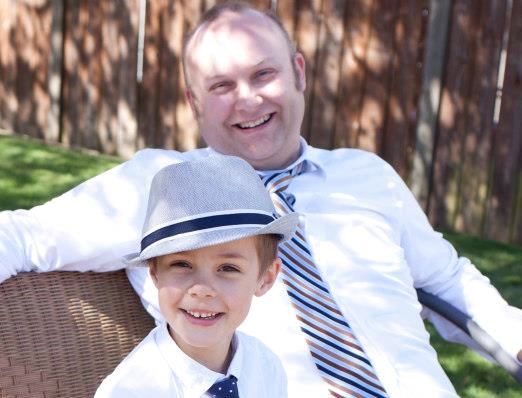
Computer Science
When people find out I have dyslexia, they ask “what is it like?” I’ve never found an answer for this question because I’ve never known what it’s like to process the world around me without it.
I first found out I had dyslexia in the early 80’s at the age of five. Luckily, I was in a school district that had a program for students with learning disabilities. However, I always felt different from others when I would go across the hallway and, later on, across the school district. At one point, I went to three different schools in three years as my needs grew.
Computers came into my life while I was moving between schools and had an abundance of spare time. I realized that when you are programming a computer, it doesn’t care if you have a hard time proofreading your own work, or if you misspell something. It only cares if the answer is correct, simple, and objective. I found the binary nature of the result and feedback comforting because I didn’t have to explain ideas in an abstract and, what at times felt like, arbitrary language. During that time, I felt a computer could understand what I was saying better than others around me due to my struggles with reading and writing.
Reflecting on my education, I see two pivotal moments. The first was being a part of a college-preparation program for high school students with disabilities called DO-IT Scholars. When I joined, I had been, either consciously or unconsciously, just coasting through school because it was hard working around my dyslexia. In the Scholars program, I met others who were working through similar issues with success and even joy. I felt part of a community that was interested in academic success. This helped renew my focus.
In high school and college, advocating for myself was hard—not because the programs weren’t present, but because I didn’t think I needed help and, at times, neither did others. Accepting that I needed accommodations, like extra time for tests, a proofreader, or a quiet room, made a huge difference in succeeding in school. I also learned that the goal of accommodations was to provide equal access, not to provide special treatment.
As I get older, I realize my dyslexia does make me different, but it doesn’t disable or disadvantage me. It allows me to see problems, understand people, and view the world in a different way. Immersion in STEM, and more specifically computer programming, has been one way that I have found that allows me to make a huge contribution by seeing the world in a way that others often don’t.
Kayla
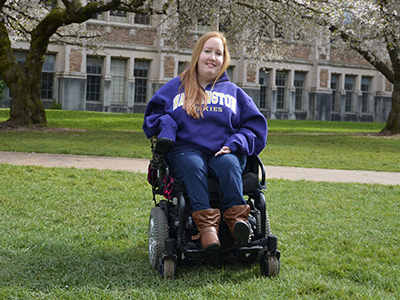
Research & Advocacy
When I was in high school, I felt lost and unsure of where I was headed in terms of college and my future career. I felt as if I was waging a constant battle against my label as a student with a disability. Not being encouraged to take Advanced Placement classes, participate in the Running Start program, or even knowing other students with disabilities who were college- bound really had an effect on my confidence level. During my junior year, a supportive special education teacher exposed me to life-changing resources that helped me get into college and get ready for transition out of high school. Without her, I don’t know where I would be.
Being a first generation college student, I had very little support in the transition process, especially with the added difficulties associated with being a student with a disability. This teacher told me about the DO-IT Scholars program, a transition to college program at the University of Washington for students with disabilities. From that point on, I became a different person. Building a support network of other people with disabilities and mentors who could help me find job opportunities made all the difference for me. After all, your support network is made up of your biggest fans—those who will cheer you on and remind you that you are capable of succeeding.
After conquering the transition to college, my next challenge was finding the right career path. Because I struggled in math and science classes in high school, I never considered that I would take a path toward related fields. Fortunately, my college experience allowed me to take classes from all disciplines, and I discovered my love of research. I was able to channel my passion for social change by designing tangible ways of creating that change. I studied community psychology, a field that draws from multiple perspectives in order to examine the wellness of entire groups of people.
I am pursuing a master’s degree that bridges what I learned in my undergraduate program to a potential career. I would like to focus on research and program development to make positive change within the systems put in place for people with disabilities. I envision a world where the disparity in employment between people with disabilities and people who are not is reduced and more opportunities for minorities are put in place. I know how influential these opportunities can be.
Jesse
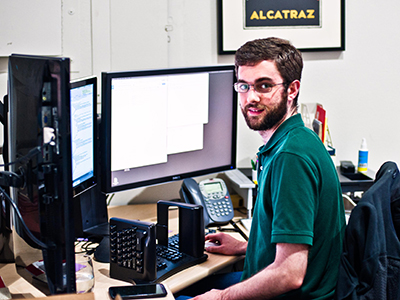
Software Engineering
I used to rarely bring up my disability; it was something I kept to myself. However, I’ve discovered that by being open about it, I gain an important opportunity to frame the conversation about my disability, as well as make specific connections with people. I think that making the right connections at the right time can be crucial for success.
I have dyslexia, which, as a child, not only impeded my ability to read, but made me often see and interact with information in a different way.
I went to Goshen College and received a bachelor of science degree in computer science. I interned at a variety of technical companies—for two summers I worked for Microsoft, and the summer after graduating college I interned at NASA, IBM, and 3Tier Group. These experiences taught me how to learn on the job, collaborate with others, take on new tools and technologies, and solve problems. In the field of computer science, learning and problem solving are two constants. In the tech field, there are always new technologies, new software, and new techniques, so being able to learn and grow on the job is an important skill to have.
Eventually I began working for an organization called Digital Foundry as a software developer. I am now the technical lead on software projects for outside clients. In my job, one of the communication skills I try to teach software engineers is how to explain the user experience to the client. Instead of using technical jargon, it’s better to show the clients something they are invested in. This fosters trust that we are looking out for them and their concerns and initiates a collaborative conversation about how to best meet their needs and goals. My disability helps me see the world and technology in a different way, and how I see the relationship between one thing and another is really helpful in my work.
Working with a broad range of software projects and leading a team of software engineers allows me to enjoy different tasks and focus on different skills. I really enjoy my current career trajectory, and I plan to continue where I am for the time being. I try to teach others what I have learned: that it’s my responsibility to do what’s needed to be in control of my own success.
Using STEM to Change the World
"Courage is being scared to death but saddling up anyway" - Shawn
STEM students and professionals are often motivated by the positive impact their work may have in the world. This includes people with disabilities in STEM The goal of AccessSTEM is to increase the number of individuals with disabilities completing postsecondary STEM degrees and entering the STEM workforce. AccessComputing has a similar goal, but focuses more narrowly on computing fields.
Project interventions for students with disabilities are consistent with the five conditions for nurturing healthy, successful children identified by America’s Promise—The Alliance for Youth: caring adults, safe places and constructive use of time, a healthy start and healthy development, effective education for developing marketable skills and lifelong learning, and opportunities to make a difference through helping others.
Through project activities, participants are encouraged to learn science (attraction), choose to keep learning mathematics and science (retention), graduate (persistence), and continue into STEM careers (attachment)—steps encouraged by the NSF Committee on Equal Opportunities in Science and Engineering.
Additionally, project leaders are guided by the results of an evaluation of research about NSF-funded programs conducted by SRI International in 2009 in which AccessSTEM was featured. SRI International identified important characteristics that contributed to successful outcomes of AccessSTEM were interventions that promote
- Belonging (both academic & social integration),
- Involvement (in academic & social life),
- Purpose (e.g., through internships, workshops, networking, mentoring), and
- Self-determination (skill building, practice).
Some students are excited about working on assistive technology, software, applications, health care, and other products designed to help individuals with disabilities. Others are more interested in using their STEM degree to work on myriad pressing issues such as climate change, national defense, social inequities, national infrastructure, and public policy.
In the following section of this book, students share their ideas about using STEM to change the world around them.
“Education is by far the most powerful weapon you can use to change the world.” - Nelson Mandela
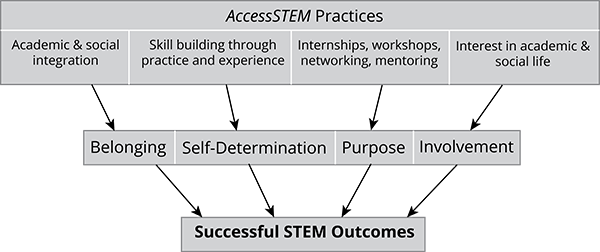
Erika
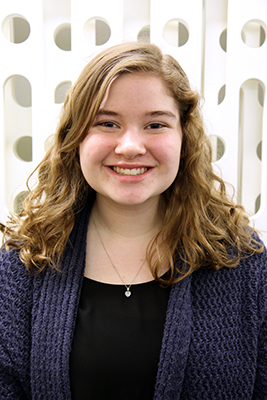
Assistive Technology
I think a lot about how people view my disability and that has always been part of the reason I want to pursue a STEM career. My experiences have led me to believe that few people have the expectation that deaf people will pursue or succeed in STEM.
I have always tried to prove that I can do anything I set my mind to. I graduated from high school with numerous awards. This included being the first deaf speaker at graduation and being in the “Principal Hall of Fame.” All of these awards reflect my dedication and focus in high school and helped me get into the University of Washington. I hope my accomplishments make me a role model and show other deaf people that disability shouldn’t limit one’s success in life.
From a young age, my parents encouraged me to overcome the challenges related to my disability. Through a college-preparation program, I learned skills to advocate and stand up for myself and not let my disability define my path to success. AccessComputing’s Summer Academy for Advancing Deaf and Hard of Hearing in Computing helped me explore numerous STEM careers through networking with people locally and nationally. This helped me build connections and gave me basic tools to get started on a career in computer science.
I intended to study biomedical engineering before changing to computer science, following a newfound passion for programming. I know that computing will offer me the challenges I’m looking for while pursuing my dream to design assistive technology and create prototypes that will change how people with disabilities access the world around them. I don’t want people with disabilities to feel they cannot follow their passions based on what other people say or their own doubts.
In my vision for the future, I see people with disabilities doing the previously perceived impossible and having just as many career opportunities as able-bodied people. I also dream of seeing more people with disabilities in STEM fields and showing what people can accomplish with perseverance and determination.
Tiyah
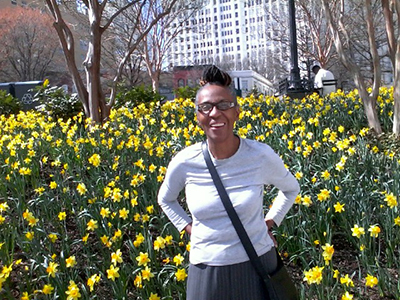
Technology & Independence
One of my greatest passions is using technology to engage older individuals with a disability towards discovery and independence, especially in the digital world. I have worked hard to grow a toolbox of skills, including going back to school to receive a B.S. in vocational technical education with an emphasis on computer instruction and a certificate in library information science technology. Both of these accomplishments have been a huge asset in helping others and making my dream a reality.
In the 70’s I received training on personal computers. I fell in love with computers and way they can empower people. I used these skills while working as a technical support specialist and in the hospital field, where I facilitated computer productivity trainings and set up databases.
Eight years later, I developed carpal tunnel syndrome that morphed into severe rheumatoid arthritis, which challenged my professional and personal ambitions. I had suffered great loss of hand functionality because of acute deformity. Eventually, my injury caused me to lose my job and lose hope about mastering computing skills. Medically, I couldn’t return to operating computers the way I had done before. I worried that my dreams and ideas in the technical world were at an end.
Then one day, I was volunteering at a science museum and I discovered accessible technology! Various products such as Dragon Naturally Speaking were being exhibited
and demonstrated. This experience helped me find the courage to redefine my life and enter back into the computing world. I decided to “take my life by the horns.” This is when I decided to go back to school and use my passion for technology in a different way. Between vocational rehabilitation, my family, and a progressive school disability services, I was successful.
For the next ten years, I went on to run computer labs, work at Intel, and be an accessibility technology assistant. I mentor students with disabilities to succeed in STEM. My toolbox of skills will help me achieve anything I set my mind to, and with my recent certification, I plan on following my passion of helping individuals find independence through technology.
Brandon
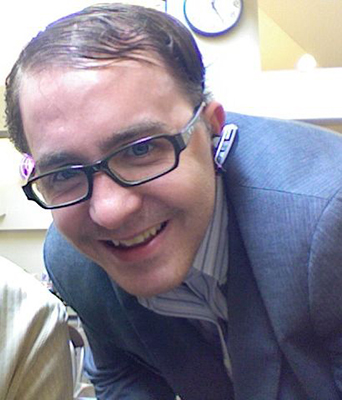
Education
Ever since I was in kindergarten, I’ve wanted to be a teacher. I have always been a lover of science, knowledge, and helping others. Throughout my life, I have had the privilege of great teachers who showed me the meaning and value of education, and I hope to share that with future students. My big idea is to change the educational system so no one feels isolated or cut off from education, which will help students with disabilities be more accepted and valued and hope for a brighter future.
When I was thirteen, I sustained a traumatic brain injury that turned my life upside down. I started to have a profoundly negative experience throughout high school by being isolated from my peers. I questioned whether I still wanted to be a teacher and what options I even had with my new disability. Eventually, I decided I still wanted to be a teacher. In college, I had the opportunity to reflect on my high school experience and my future aspirations and realized, although I did still want to be a teacher, I was meant to help make the world better for people with disabilities. I changed majors to psychology to better understand the human mind and decided to go to graduate school to become a counselor. My passion became helping adolescents with disabilities have fulfilling and meaningful school experiences.
I have now been trained as a teacher and a psychologist as well as a mental health and vocational counselor. I’ve also had training as an assistive technology specialist and utilize a right-handed keyboard on which I can type upwards of 70 words per minute. My right-handed keyboarding ability aided me greatly throughout school, making it possible for me to type long papers.
Through education, living as a person with a disability, and observations of social constructs, I have a perspective on disability, community, and society that will assist me in making contributions to the disability community. At my current job, I help people with disabilities get into the workforce, but I endeavor to become a licensed mental health counselor with strong technical skills.
Alysa
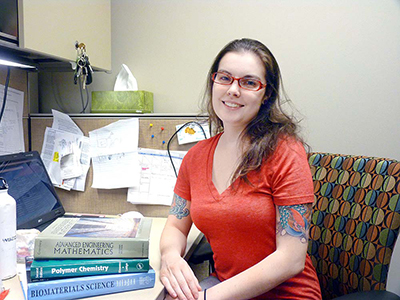
Engineering
My big idea is in cardiac tissue engineering, where I am focusing on the properties of the polymer scaffolds that will drive the differentiation of induced stem cells into human heart tissue.
When I was young, I spent all of my time reading about science and technology, looking for bugs in my backyard or doing science experiments in the kitchen. I was the first person in my family to attend college, and I originally graduated with a degree in psychology. After a few years, I realized I wanted to go back to study chemical engineering.
I decided to follow my passion for research because I’m a hands-on person. A friend of mine had gone back to school for engineering and told me about her new job doing fieldwork. I felt jealous, but then I realized there was no reason I couldn’t be an engineer like her. Though I was working as IT support for Microsoft at the time, when my contract ended I decided to return to school to study chemical engineering.
I had health problems that became disabilities by the time I started class—chronic pain that made it difficult for me to concentrate, and, when I got sick, I had to stay in bed for several days. Returning to school with disabilities
was a challenge, but I’ve had so much support that my health problems haven’t held me back. I took prerequisite courses at Bellevue College, where they introduced me to AccessSTEM, a project that continued to provide encouragement and success strategies as I transferred to the University of Washington. While at University of Washington, I was involved in student leadership, did multiple research projects, and completed a year-long internship.
With the encouragement of my professors, I applied for graduate programs, and I decided to attend the University of Texas at Austin. Although it’s been difficult, I am incredibly excited about the chance to contribute to science and technology. After earning my Ph.D., I will continue working in research, possibly becoming a professor.
Ivan
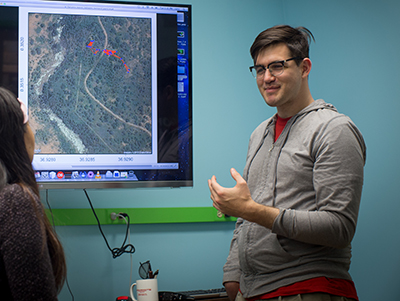
Data Mining & Research
I am a computer science Ph.D. student at the University of Illinois at Chicago, in the computational population biology lab. In my research, I develop data mining and machine learning methods for prediction in networks. I focus on interdisciplinary computational sciences, including ecology, biology, and atmospheric science. Science has always been a passion of mine; interdisciplinary research has allowed me to gain familiarity with several areas of science from a computational perspective, and I have produced work that would not be possible without close collaboration.
As a person living with cerebral palsy, I am active in advocacy and inclusion within computer science for women and other underrepresented groups. I am a 2014 Google Lime Scholar, and I volunteer with the Broadening Participation in Data Mining workshop. In my youth, I lacked the peer support I’ve now gained through these activities. At that time, I had lowered expectations for my career path and discomfort in my own body. I want to ensure that young students have the support and encouragement to succeed in research.
In a crowded professional field, I see my disability as a slight but valuable distinction and an opportunity to be a positive representation to colleagues who may not know others with cerebral palsy. By making connections and proactively sharing research ideas, I have gained research-oriented internships at Technicolor Research, Lawrence Livermore National Laboratory, and Microsoft. Furthermore, I have gained a strong intellectual connection to data mining and machine learning. I aim to contribute to these areas throughout my career.
I feel that interdisciplinary computational science dramatically extends the capability of scientific investigation. Combining deep scientific knowledge with statistics and computational methods allows scientists to develop novel hypotheses on data too large and complex to directly visualize and understand. In my research, I develop computational methods that extract repeatable and significant patterns in complex data, while scientists investigate why these patterns emerge.
I wish to see more top minds in data mining and machine learning dedicated to creating novel scientific and algorithmic understanding. Many of the grand open questions in science are now data-driven questions: how does consciousness emerge from biological structure? Does life exist elsewhere in the universe? Aside from these grand visions, new and more sophisticated data are opening up several scientific disciplines to new opportunities for interdisciplinary research. I am tremendously excited to enter such a vibrant and expanding landscape of data-driven science. I have big ideas about how data-driven science can change the world.
Shawn
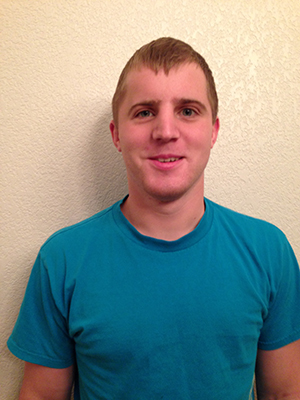
Mechanical Engineering
I became interested in engineering while in high school because math and physics came easily to me, and I had an interest in automobiles. Since I couldn’t be a professional racecar driver due to my visual impairment, I decided to study what made cars, trucks, planes, and other mechanical objects work. I have big ideas for new and improved vehicle designs!
I am currently pursuing a bachelor’s degree in mechanical engineering, along with minors in business, mathematics, and aerospace engineering, at Embry-Riddle Aeronautical University in Prescott, Arizona. I decided to attend Embry- Riddle Aeronautical University to study mechanical engineering because they have an outstanding reputation for their aerospace program. They have also never had
a blind student attend their university before. I wanted to take the road less traveled, pave the way for others to come, and become more independent by getting out of my comfort zone.
Though I struggled at first with available resources, Embry-Riddle’s disability services center worked hard to provide me with the tools I needed to succeed. My professors, my advisor, and I worked together to make sure all of my classes were accessible, and the Washington State Services for the Blind assisted me in tuition costs and accessible equipment. My family has also supported me and helped obtain materials to assist me in my everyday endeavors.
My goal is to become an engineer in the automotive industry. I want to use STEM to design new vehicles— ones that are safer, more efficient, and more reliable. In order to achieve that success, I will continue to take on tasks with everything I have. One of my favorite quotes is “courage is being scared to death, but saddling up anyway.” I will continue to utilize all support and services available to me in my quest to achieve my goals. Success and happiness is what you make of it, and only you can decide whether you will be at the top of the mountain or at the rock bottom.
Johanna
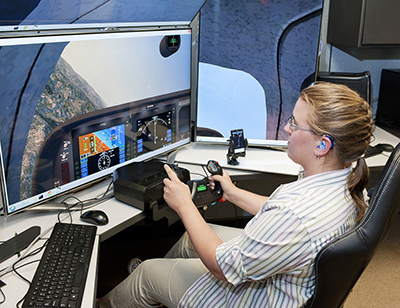
Human-Centered Engineering
My high school didn’t have computer science classes; I had no exposure to computer science until I was 16 years old. That year, I was accepted AccessComputing’s Summer Academy for Advancing Deaf and Hard of Hearing in Computing, a nine-week program at University of Washington. When I learned about HTML and JavaScript, it was like a brand new world to me. I loved the puzzle of figuring it out and realized that computer science was a good match for me. I was invited back as a teaching assistant for the Summer Academy the following summer, where I learned about Java. It was amazing experience overall. I continued studying computer science when I enrolled at the University of Minnesota.
I use American Sign Language (ASL) interpreters in order to access my classes. Since ASL is my native language, when I’m reading English during an exam, I need an interpreter to translate it to ASL to fully understand the instruction and questions. Professors have been open to my questions and comments and have gladly accepted my feedback regarding lecture style (consider using a laser pointer to point to specific material on PowerPoint slides), usage of board (better organization), and tips on working with interpreters (look at me instead of the interpreter and speak at a normal pace).
This past summer, I had the honor of participating in a 10-week summer internship with NASA’s Dryden Flight Research Center in California. Through the internship, I developed new and improved partially developed graphic elements and human interaction aspects of an Android application. The app is a collision avoidance technology that provides warning cues to pilots when they are too close to or are about to collide with terrain. The people I worked with were wonderful with communication. I used a combination of ASL, speech, and Ubuntu when I had causal one-on-one meetings with a person. For group and formal meetings, I mainly used an ASL interpreter. At one point, I asked my support specialist for a keyboard tray. Another time, I needed more information about Android Development Tools, and my coworkers lent me books to use over the course of the internship.
The experience of working on an app during my internship further fueled my passion for human and computer interaction and my desire to improve individuals’ standard of living through technology. I ultimately want to develop and improve technology in terms of usability, accessibility, and quality through apps, and I hope to work in a team-oriented environment. I want to grow as a leader in my profession.
Claudia
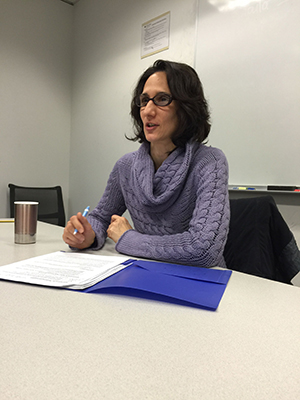
Environment & Community
Usually summers and holidays are filled with dread as most of my more able- bodied friends go off and travel, and I am stuck at home without much to do. However, this last summer, I did a variety of things to help me organize my academic plan for the coming years. A small stroke of luck, in the form of a meandering snail, made all the difference.
Going back to school took an enormous amount of courage given my disability. Luckily, as I adapt to my physical condition, more and more I find myself being myself, which is reassuring. This might sound like common sense, but it’s much harder to do than people may realize, especially when dealing with a body that often has a mind of its own.
Recently, I participated in an accessibility review event at our local aquarium to comment on the facility and whether people with disabilities can access the experience. It was busy that day, and usually I avoid crowded areas and large groups, because I know that most of the experience will end up being inaccessible to me. In spite of being used to barriers, this event got me thinking about what it could be like to have equal access and fully experience facilities like the aquarium.
While I was still pondering the aquarium accessibility review, I participated in another event volunteering on a campus-affiliated farm. I found it difficult to volunteer given my physical limitations. There were several things I couldn’t do. I was frustrated, but I thought about this event and the aquarium accessibility review, and it inspired deeper thinking about community and environment.
I was struggling to make progress, but then a lucky thing happened. I was at a public school waiting for my child, and a snail crawled across a patch of newly cleared ground between the school’s garden beds. As I was taking a picture of the snail, the person who built the beds walked up and introduced himself. We ended up talking for a while, and I learned that he teaches biology on my university campus! He built the beds in order to get people involved with nature and excited about biology.
Through that interaction, I realized I’d like to bring together my majors (environmental science resource management and community and environmental planning) by starting a project between the campus farm and the public schools, with an emphasis on integrated community access and participation. I never expected to come up with anything like this at the start of summer. I drafted a plan for my project and hope to implement my ideas and count it as part of my degree requirements. I think I have a great idea for using my STEM education, and I’m excited to bring it to life.
Resources For Supporting Students with Disabilities Pursuing STEM
The following resources may be of interest to students with disabilities and to those supporting students with disabilities pursuing STEM academic programs and careers.
All of the following resources can be accessed from the DO-IT website at www.uw.edu/doit.
Related Projects
The following projects relate to increasing the success of people with disabilities in STEM careers.
AccessSTEM
In a partnership led by the DO-IT Center, AccessSTEM serves to increase the participation of people with disabilities in STEM careers. Outreach and dissemination efforts extend nationwide.
AccessComputing
The purpose of AccessComputing is to increase the participation of people with disabilities in computing careers. Outreach and dissemination efforts extend nationwide. AccessComputing is a partnership between the DO-IT Center and the Department of Computer Science at the University of Washington.
Communities of Practice (COPs)
The DO-IT Center at the University of Washington hosts online CoPs for multiple stakeholder groups. Communicating using email, members of CoPs share perspectives and expertise and identify practices that promote the participation and success of people with disabilities in education and careers. Multiple CoPs directly relate to STEM, including the STEM Educators CoP; AccessCyberlearning CoP; AccessCSForAll CoP; Broadening Participation CoP; Computing Faculity, Administrator, and Employer CoP; and Accessible Information Technology CoP. To learn more about these CoPs, visit www.uw.edu/doit/resources/communities-practice.
Resources
The following publications, knowledge base, and videos showcase how to make STEM more accessible to, welcoming to, and usable by people with disabilities.
Accessible Science Equipment
Sometimes all it takes for a student with a disability to participate in a science activity is planning ahead when selecting products for a science lab. Below are examples of products the DO-IT Center has purchased to make science activities accessible to all students.
Checklist for making Science Labs Accessible to Students with Disabilities
A series of strategies for implementing universal design and accessibility into science and STEM labs. This activity leads to greater awareness and more inclusive learning environments.
Accessibility Reviews of Informal Science Education Facilities and Programs
AccessSTEM team members engage in opportunities to review science programs or facilities where they earn a stipend plus the cost of the visit, if they submit an accessibility review form. This promising practice increases student knowledge of accessible science, and increases the awareness of accessibility issues for staff members at informal science education facilities. This practice can adopt the practice and includes worksheets and instructions.
KNOWLEDGE BASE
The DO-IT searchable Knowledge Base currently contains over 800 Case Studies, Promising Practices, and Q&As regarding accessibility of technology, college, graduate school, and careers for individuals with disabilities. Some sample articles from the Knowledge Base include the following:
- Are there guidelines for describing STEM images within digital talking books?
- The Elevator Pitch Contest: A Promising Practice for Preparing STEM Students with Disabilities for Employment
- What affects the self-efficacy of postsecondary students with disabilities in STEM fields?
- What are key issues for increasing the successful participation of individuals with disabilities in STEM fields?
- Where can I find training materials for making STEM instruction accessible?
- Where can I learn about sign language for STEM fields?
VIDEOS
The following videos promote the success of people with disabilities, particularly in school and work settings. DO-IT videos play in Able Player, a custom accessible media player with audio description and transcripts provided. They can be downloaded or viewed at www.uw.edu/doit/do-it-videos. The Search Video Library feature enables users to search the full text of all videos and begin playing videos at specific start times from the search results.
- STEM and People with Disabilities
- Equal Access: Universal Design of an Academic Department
- Captions: Improving Access to Postsecondary Education
- Working Together: People with Disabilities and Computer Technology
About the Editors
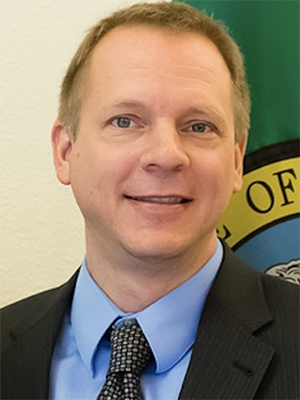
Scott Bellman currently serves as program manager of the Disabilities, Opportunities, Internetworking, and Technology (DO-IT) Center at the University of Washington, where he has worked for 15 years. His interests include the career development of students with disabilities and access to challenging postsecondary programs and careers. Scott attended the University of Iowa, where he received a master’s degree in vocational rehabilitation counseling and a degree in psychology.
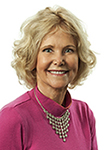
Dr. Sheryl Burgstahler founded and directs the DO-IT Center. Dr. Burgstahler is an affiliate professor in the College of Education at the University of Washington. Her teaching and research focus on the successful transition of students with disabilities to college and careers and on the application of universal design to technology, learning activities, physical spaces, and student services.
Acknowledgments

The National Science Foundation (NSF) funds The Northwest Alliance for Students with Disabilities in Science, Technology, Engineering, and Mathematics (AccessSTEM, Grant #HRD-0833504) and The Alliance for Access to Computing Careers (AccessComputing, Grant #CNS-1042260). Any opinions, findings, and conclusions or recommendations expressed in this material are those of the authors and do not necessarily reflect the views of the National Science Foundation, and you should not assume their endorsement.
The editors of this book would also like to acknowledge DO-IT staff members Tamitha Tidwell, Brianna Blaser, Kayla Brown, and Debra Zawada for their work with students featured in this book; Elizabeth Lee, KC Lynch, and Tina Tran for helping manage the content and prepare this book for publication; Lyla Crawford for her help with evaluating and reporting for projects described; and Doug Hayman for helping students identify and procure technology needed for success.